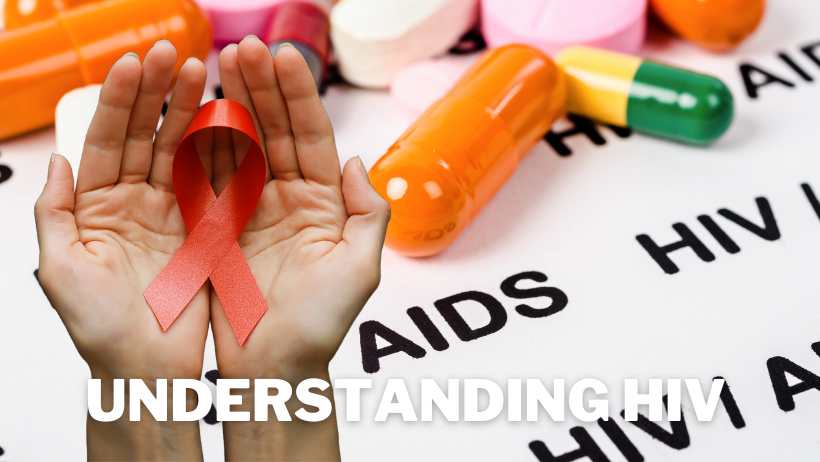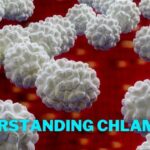
Hello, I am writing to you. In the present discourse, we shall explore the intriguing realm of HIV and its ramifications on the immune system. Human Immunodeficiency Virus (HIV) is an infection caused by a virus that targets the immune system in particular.
The virus has the potential to spread via a range of bodily fluids, including blood, sperm, and vaginal secretions. HIV can eventually transform into AIDS, a more severe condition, if not appropriately managed. Positively, there is still hope!
With the aid of antiretroviral therapy (ART), HIV can be managed and further harm prevented. It is imperative to comprehend that the manifestation of symptoms is not universal among individuals living with HIV; thus, testing assumes a critical function in the diagnosis of the infection.
The good news is that options for testing at home are available. Additionally, routine testing is advised for sexually active individuals by the CDC.
Additionally, the risk of contracting HIV can be substantially reduced with the use of a medication known as PrEP. Knowledge of one’s status, use of protection during sexual activity, and avoidance of needle sharing are all components of prevention. Thus, let us embark on this enlightening expedition and acquire further knowledge regarding HIV and its immunological ramifications!
The Influence of HIV on the Immune System
The Human Immunodeficiency Virus (HIV) is an immune-compromising viral infection. HIV infects CD4 cells, also referred to as T cells, which are vital for the normal operation of the immune system, upon entering the body. These cells undergo viral replication and subsequently undergo gradual destruction, resulting in a compromised immune response.
Describe HIV.
HIV is classified as a retrovirus and predominantly disseminates via sexual contact, vertical transmission from mother to child during childbirth or lactation, and infected blood.
Additionally, contaminated needles and syringes, as well as needles utilized in body piercing or tattooing, may serve as vectors for transmission. Since the virus cannot persist outside the human body for an extended period of time, incidental contact such as handshakes and hugs does not result in transmission.
What is the impact of HIV on the immune system?
HIV exerts a dual influence on the immune system. It begins by infecting and destroying CD4 cells directly, resulting in a reduction in their population. CD4 cells are essential for coordinating the immune response; therefore, their depletion compromises the ability of the immune system to effectively combat infections and diseases.
Secondly, HIV gradually compromises the overall functionality of the immune system. As a consequence of impeding the body’s capacity to generate fresh CD4 cells, the virus gradually reduces their concentration.
Consequentially, this persistent reduction in CD4 cells results in an individual developing a compromised immune system, rendering them susceptible to opportunistic infections and additional complications.
The spread of HIV
Frequent methods of transmission
The prevailing means of transmitting HIV are through unprotected sexual contacts, encompassing both anal and vaginal contact, with an infected partner. Sharing instruments or injections that have been contaminated with the virus represents an additional notable method of transmission. Furthermore, HIV can be transmitted during breastfeeding or childbirth from an infected mother to her offspring.
It is imperative to emphasize that informal modes of transmission, including sharing domestic items, kissing, or holding, do not facilitate the transmission of HIV. Due to the virus’s poor ability to persist outside the human body, environmental surface transmission is exceedingly uncommon.
Fluids of the body that can transmit HIV
Diverse bodily fluids of an infected individual may contain HIV. Blood, sperm, vaginal secretions, and breast milk are the most prevalent fluids considered to be vectors of the virus. It is critical to avoid the exchange of these fluids, as they may contain sufficient amounts of HIV to result in transmission, by adhering to safe practices.
Advancement from HIV to AIDS
Define AIDS.
Acquired Immunodeficiency Syndrome (AIDS) represents the conclusive phase of HIV infection. Severe injury to the immune system causes this condition, which is characterized by a substantial reduction in the number of CD4 cells and the subsequent development of opportunistic infections or tumors. AIDS is a critical medical condition that carries the risk of life-threatening complications.
Contributing elements to the progression of HIV
There are numerous potential contributors to the development of AIDS from HIV. An individual’s adherence to antiretroviral therapy (ART) is among the most instrumental factors. Utilizing ART on a regular and consistent basis can delay the onset of AIDS and impede the progression of HIV.
Additional contributing factors that may expedite the progression of HIV encompass an impaired immune system resulting from specific medical conditions or maladies, participation in behaviors that expose the individual to additional infections, and failure to promptly seek treatment or medical attention following an HIV diagnosis.
HIV Management Using ART
Antiretroviral therapy (ART) is to be defined.
ART, or antiretroviral therapy, is the conventional approach to managing HIV infection. It is accomplished through the administration of antiretroviral medicines, which are a class of medications designed to inhibit the virus’s replication within the body. Although ART does not provide a cure for HIV, it does enable individuals to live extended, healthier lives by aiding in infection management.
How does ART aid in HIV management?
By decreasing the viral burden, or the quantity of HIV in the body, ART is effective. A reduction in the viral load leads to enhanced functionality of the immune system, thereby decreasing the vulnerability of the individual to opportunistic infections and other complications associated with HIV. Furthermore, ART is indispensable for preventing the spread of HIV.
Advantages and difficulties of ART
There are numerous advantages to ART. By substantially extending the lives of those living with HIV, decreasing the risk of developing AIDS-related ailments, and enhancing overall quality of life, ART can be utilized effectively. Furthermore, when viral burden is undetectable, it can decrease the likelihood of transmitting the virus to sexual partners.
Nevertheless, certain individuals may find it difficult to adhere to antiretroviral therapy (ART) on account of stigma, medication adverse effects, drug burden, socioeconomic obstacles, and mental health concerns. Healthcare providers have a critical responsibility to aid patients in surmounting these obstacles and to offer continuous assistance throughout their ART trajectory.
Indicators of HIV
Usual manifestations of HIV
Symptomatic individuals do not necessarily manifest during the initial phases of HIV infection. However, it is possible for certain individuals to exhibit influenza-like symptoms a few weeks after acquiring the virus. Fever, fatigue, enlarged lymph nodes, sore pharynx, rash, and muscle pains are some of these possible manifestations.
Noting that these symptoms are non-specific and can manifest in conjunction with numerous other prevalent illnesses is crucial. Consequently, the mere existence of these symptoms does not suffice to establish the presence of HIV. The sole means by which an accurate diagnosis can be acquired is via HIV testing.
Asymptomatic infection with HIV
Several individuals who are living with HIV remain asymptomatic for years, despite the fact that the virus remains active within their bodies. This condition is referred to as asymptomatic HIV infection. The virus continues to proliferate actively and cause immune system injury during this phase, underscoring the criticality of early detection via testing.
Identifying HIV
The value of conducting HIV testing
Testing for HIV is essential for early detection, which is critical for effectively managing the infection. Prompt diagnosis enables individuals to obtain essential medical attention and initiate treatment, thereby potentially substantially enhancing long-term results. Furthermore, it is critical to be aware of one’s HIV status in order to effectively prevent the spread of the virus.
Varieties of HIV kits
There are numerous varieties of diagnostic assays available for HIV. Antibody tests, antigen tests, and combination tests that detect both antibodies and antigens are the most prevalent types of testing. As specimens for these procedures, blood, oral fluid, or urine may be utilized. Moreover, swift tests offer results in a matter of minutes, which enhances their accessibility and convenience.
It is advisable to undergo confirmatory testing in the event that an initial test yields a positive result, in order to guarantee a precise diagnosis. This entails validating the initial affirmative result with an alternative test.
Options for HIV testing at home
The availability of at-home HIV testing options has experienced a notable surge in recent years. Individuals are able to conduct HIV tests in the seclusion of their own residences using these testing instruments. Generally, the procedures entail procuring a specimen, which may be oral fluid or blood, in accordance with the guidelines furnished, and subsequently transporting the specimen to a laboratory for examination. HIV status can be determined with greater convenience through at-home testing, particularly for individuals who encounter obstacles in accessing conventional testing facilities.
Routine Examinations and CDC Suggestions
The importance of routine testing
Routine HIV testing is essential for the health of the general public and of individuals. Routine testing enhances health outcomes for individuals by facilitating timely access to care and treatment and enabling early detection. Consistent testing is also essential in order to prevent the transmission of HIV to sexual partners, since those who are informed of their own HIV status can adopt protective measures for their partners.
Guidelines from the CDC for sexually active people
Regular HIV testing is advised by the Centers for Disease Control and Prevention (CDC) for all sexually active individuals, irrespective of their perceived level of risk. The CDC advises higher-risk individuals, including those who engage in unprotected sexual activity or have multiple partners, to undergo testing annually.
Those who are significantly more susceptible to contracting the virus, such as those who have a known companion living with HIV, might find it advantageous to undergo testing more frequently, say every three to six months.
Preventive Strategies for HIV
Aware of one’s HIV status
HIV status testing is essential for both individual and public health. You can make informed decisions regarding your sexual and reproductive health, protect yourself and your partners, and locate resources and support for HIV treatment and care if you are aware of your HIV status.
Sexual safety procedures
Safe sexual behavior is crucial for preventing the transmission of HIV. This includes the consistent use of dental dams for oral sex and contraceptives during both vaginal and anal sexual intercourse. It is critical to engage in candid discussions with sexual companions regarding one’s sexual health and HIV status, and to undergo routine medical examinations and testing.
Protection utilized during intimate activity
By utilizing barriers such as dental dams and contraceptives, the risk of HIV transmission can be drastically reduced. Condoms exhibit remarkable efficacy in impeding the transmission of bodily fluids that may harbor the virus. Consistency and proper condom use are crucial, as is the selection of premium products that adhere to standardized safety protocols.
Pre-exposure Prophylaxis (PrEP)
Pre-Exposure Prophylaxis (PrEP), an oral medication, is administered to those who are at a heightened risk of contracting HIV. By maintaining a constant level of preventive medication in the body, PrEP can significantly reduce the likelihood of contracting HIV from an infected individual. Daily administration of PrEP is customary; a prescription from a healthcare professional is required.
Refraining from exchanging needles
Contraband syringes and needles may facilitate the spread of HIV and additional bloodborne pathogens. It is imperative to refrain from the sharing of needles, even when not using them for injection drugs, and to utilize harm reduction services, such as syringe exchange programs, in order to obtain sterile equipment. Additionally, it is critical to dispose of used needles and syringes properly to prevent needlestick injuries and the spread of infection.
HIV, in summary, is a viral infection that exerts a substantial detrimental effect on the immune system. It is imperative to comprehend the mechanisms of HIV transmission, the trajectory of the disease towards AIDS, and the significance of testing and preventative measures in order to effectively manage the virus’s transmission and safeguard the welfare of those who are HIV-positive.
Significant strides can be achieved in mitigating the immune system’s adverse effects of HIV and advancing general health and well-being through the implementation of proactive measures such as routine testing, adherence to safe behaviors, and access to suitable healthcare. Bear in mind that information is power, and by cooperating we can achieve a future devoid of HIV.










